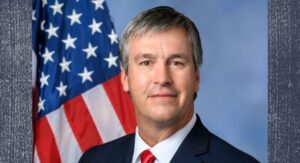Ex-Bill Clinton aide memo roils wife’s campaign over ethics
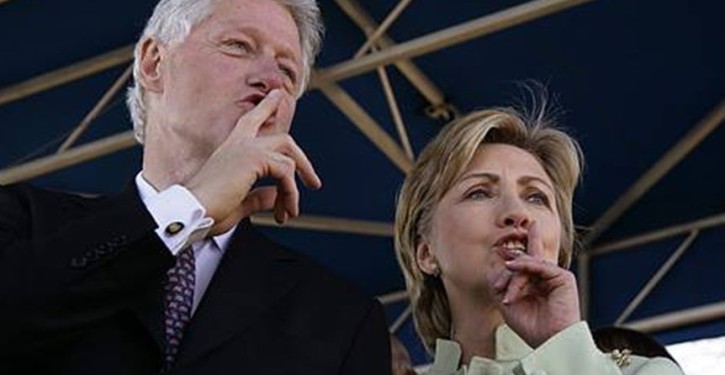
A 2011 confidential memo written by a longtime Bill Clinton aide during Hillary Clinton‘s State Department tenure describes overlap between the former president’s business ventures and fundraising for the family’s charities. The former aide also described free travel and vacations arranged for the Clintons by corporations, reinforcing ethics concerns about the Democratic presidential nominee. The 13-page memo, by Doug Band, detailed the former president’s management of “Bill Clinton Inc.” It was included in hacked emails from the private account of Clinton campaign chairman John Podesta that were released by WikiLeaks. Band described the “unorthodox nature” of how he dealt with Bill Clinton’s dual interests in seeking out speech and consulting ventures around the world while he raised funds for the Clinton Foundation. Republished with permission of the Associated Press.
Ted Cruz’s Supreme Court remark draws White House criticism
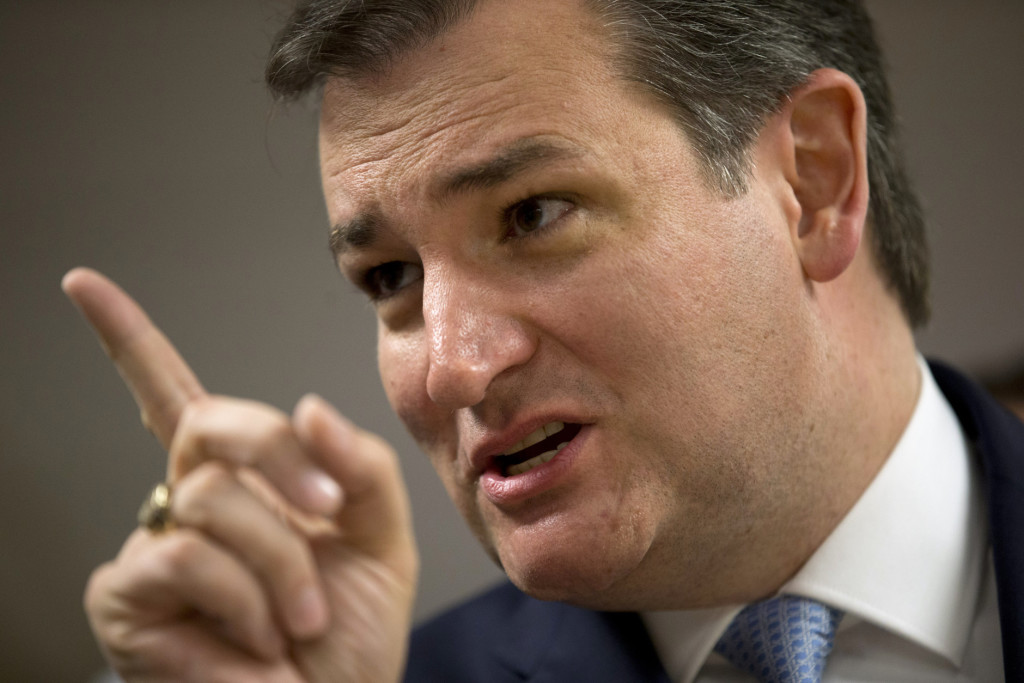
Sen. Ted Cruz‘s suggestion of an indefinite Supreme Court vacancy under a President Hillary Clinton raises questions about the credibility and integrity of Republicans who have said the next president should get to the choose who fills the vacancy, White House spokesman Josh Earnest said Thursday. Earnest was asked during Thursday’s White House press briefing about the Texas Republican’s statement that there is a long historical precedent for a Supreme Court operating with fewer justices. Earnest replied that the notion of opposing any nomination put forward by a Democratic president would be inconsistent with longstanding Senate tradition. He said historically that the Senate has evaluated candidates based on their merits. “Republicans this year have deviated from that tradition by refusing to even consider Chief Judge Merrick Garland to fill the vacancy on the Supreme Court,” Earnest said. Cruz’s comment also seemingly contradicts an earlier position he took during the GOP primary when he told CNN, “I think 2016 should be a referendum on the Supreme Court.” Sen. John McCain said earlier this month that Republicans would unite against any Supreme Court nominee that Clinton puts forward if she becomes president, though an aide later said that McCain would examine the record of anyone nominated for the high court and vote for or against that person based on their qualifications. Obama nominated Garland in March to fill the vacancy left by the death of former Justice Antonin Scalia, but Senate Republicans, led by Majority Leader Mitch McConnell, declined to hold hearings as they insisted the voters choosing the next president would have the final say on the vacancy. Don Stewart, a spokesman for Senate Majority Leader Mitch McConnell, R-Ky., said Thursday that McConnell “has been clear that it will be the next president who makes the nomination for the Scalia vacancy.” The size of the court is set by federal law and has changed over the years, but has been nine justices for most of its existence. Initially, there were six justices. The court reached its highest number, 10, during the Civil War. There has been a nine-justice court since 1869. Republished with permission of the Associated Press.
Cyberattacks put new focus on search-warrant rule change

The Justice Department says last week’s internet outages caused by widespread cyberattacks show why investigators need to be able to search internet-connected devices in faraway locations with the approval of a single judge. Some members of Congress are uneasy about the rule change that some see as expanding the FBI’s hacking powers. The change goes into effect in December unless Congress steps in to stop it. The Justice Department says hackers often infect devices across state and federal district lines, hampering law enforcement’s swift response if authorities need the same warrant signed by a judge in each district. Last week, hackers hijacked 100,000 internet-connected devices like DVRs to flood a key internet company, causing outages to services including Twitter. Republished with permission of the Associated Press.
Early voting: More good signs for Hillary Clinton in key states
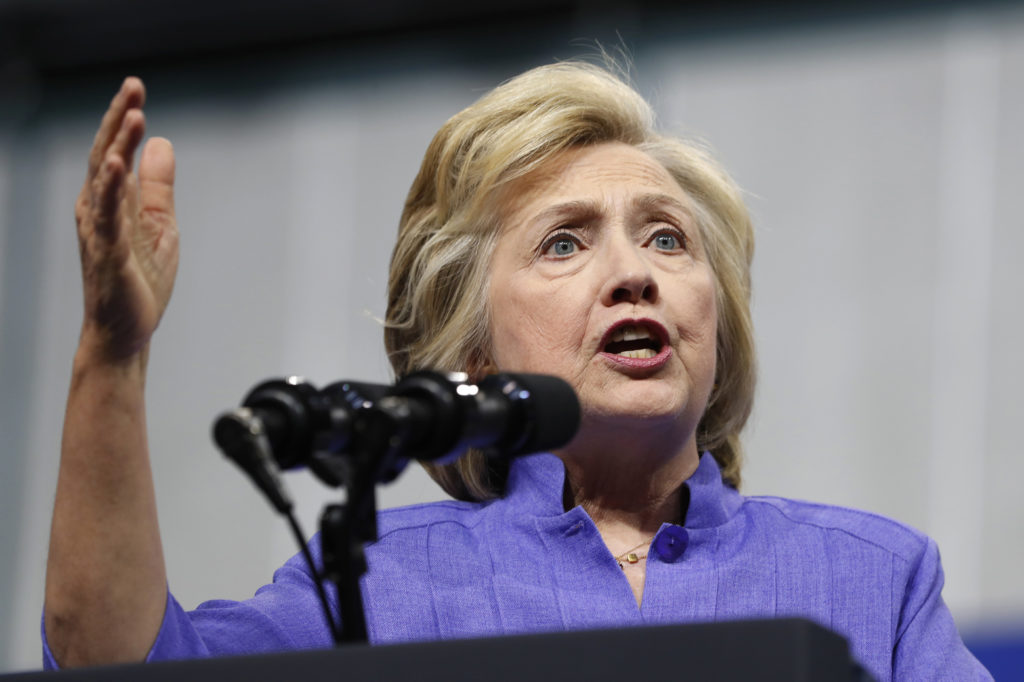
The millions of votes that have been cast already in the U.S. presidential election point to an advantage for Hillary Clinton in critical battleground states, as well as signs of strength in traditionally Republican territory. The strong early-voting turnout by those likely to support Clinton – registered Democrats, minorities, and young people among others – could leave Donald Trump with virtually no path to the 270 electoral votes needed for victory. Clinton is showing strength in Florida and North Carolina, both must-win states for Trump, as well as the battleground states of Nevada, Colorado and Arizona. There are even favorable signs for Clinton in Republican-leaning Utah and Texas. “It’s going to be a very tall order for Trump to win,” said Michael McDonald, a University of Florida professor who specializes in election turnout. Other analysts also point to a strong finish for Clinton based on the early vote. Early voting, via mail or in-person, is underway in 37 states. More than 15.5 million votes have been cast, far higher than the rate in 2012, according to Associated Press data. In all, more than 46 million people -or as much as 40 percent of the electorate – are expected to vote before Election Day, Nov. 8. A look at the latest trends: — POSITIVE SIGNS FOR CLINTON IN NORTH CAROLINA, FLORIDA The Clinton campaign describes both North Carolina and Florida as “checkmate” states. Trump probably can’t win if he loses either. After trailing in mail ballots, Democrats surged ahead of Republicans in North Carolina ballots cast after the start of in-person early voting last week. Democrats currently lead in ballots submitted, 46 percent to 29 percent. In-person voting is off to a slower start for both Democrats and Republicans compared to 2012, when Republican Mitt Romney narrowly won the state. But many Democratic-leaning counties reduced the number of polling stations in the first week, a likely factor in the decline. Several of those counties are opening more stations this week. In Florida, more than 2.4 million voters have already returned ballots. In-person voting began Monday, and Democrats have pulled virtually even with Republicans, at 41 percent each. That’s a much faster rate of catch-up than in 2012 and 2008, when Barack Obama won the state. This year’s numbers are troubling for Republicans. “If current early vote trends hold, it’s a real possibility that Clinton can sweep a majority of swing states including Florida,” said Scott Tranter, co-founder of the Republican data analytics firm Optimus. — LATINOS, YOUNG PEOPLE BUOY DEMOCRATS IN WEST Once Republican states, Nevada, Arizona and Colorado are in play for Democrats. All are crucial for Trump. Overall ballots in Nevada are down but the Democratic lead widened after the start of in-person voting last week. Democrats lead in returned ballots, 45 percent to 36 percent. Ballots from older white voters declined significantly while those from Hispanics and Asian-Americans rose. Nearly 70 percent of all Nevada ballots were cast early in 2012; Obama won the state by 6 percentage points. Early voting is surging in Arizona, normally a Republican state but one that Clinton has targeted. More than 616,000 ballots have been cast and Democrats are about even with Republicans, 37 percent to 38 percent. Another 25 percent were independent or unknown. At this point in 2012, Republicans led by more than 7 percentage points. Ballots rose in Arizona especially among younger adults and Latinos. In Colorado, where early voting has been by mail, Democrats led 39 percent to 34 percent among the 572,000 ballots returned. In 2012, Democrats trailed Republicans at this point by nearly 10 percentage points. Since then, registered Democrats have surpassed Republicans in the state. — EARLY SOFTNESS FOR TRUMP IN UTAH, TEXAS The trends out West may bode well for Democrats in two Republican strongholds. In Utah, overall ballots are up from 2012, driven by faster gains among voters ages 22 to 49, according to Catalist , a Democratic analytical firm. Republicans barely led in total ballots cast compared to independents, 38.6 percent to 38.5 percent. That could mean that Evan McMullin, a third-party candidate, is drawing support from Republicans unhappy with Trump. Democrats still trail at 19.4 percent, but they’re in an improved position from 2012, when Republicans held a 58 percent to 13 percent lead. Texas began in-person voting Monday. More than 1.3 million ballots were cast as of Wednesday, based on reports from the top 15 counties, a 50 percent increase. The state did not provide breakdowns by party. The Clinton campaign believes higher turnout, especially among Latinos, could give it an edge. — CAN WHITE SUPPORT HELP TRUMP? Boosted by white voters, Trump may still hold an edge in Ohio, Iowa and Georgia – states that still won’t be enough for him to garner the presidency without multiple come-from-behind wins in Democratic-leaning states. In Ohio, the heavily Democratic counties of Cuyahoga and Franklin continue to show double-digit declines in ballot requests compared to 2012. The state does not break down ballots by party affiliation. By race, voter modeling by Catalist found the white share of Ohio ballot requests was up to 91 percent from 87 percent. The black share declined to 7 percent from 10 percent. Democrats lead early ballot requests in Iowa, 43 percent to 35 percent. But that lead is narrower than 2012, when Democrats held an advantage of 14 percentage points. Obama ultimately won the state by 5 percentage points. And in Georgia, which does not report party affiliation, ballots submitted are up from 2012, but mostly among whites. The white share of ballots rose a percentage point to 66 percent. The black share fell to 31 percent from 34 percent, according to Catalist. Republished with permission of the Associated Press.
GOP faces obstacle in motivating Hispanic voters: Donald Trump
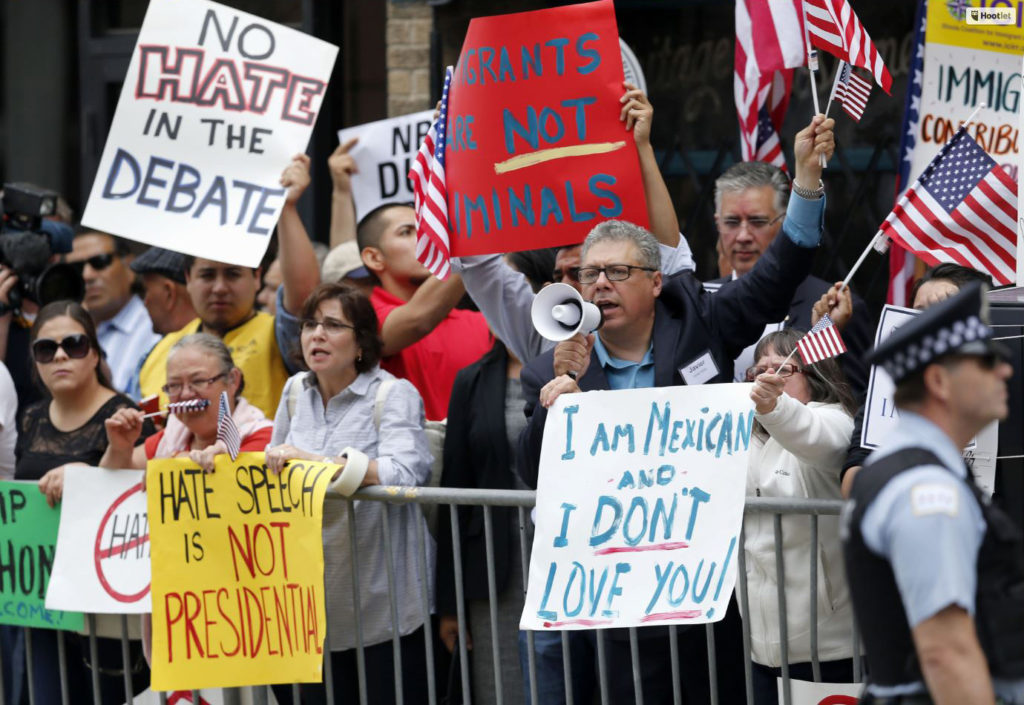
Berta Delgado told the Spanish-speaking conservative activists at her door that she is “100 por ciento” Republican, and agreed with their assessment that Democratic Senate candidate Patrick Murphy is too liberal. She said she’d vote for Sen. Marco Rubio. That is, if she votes. Delgado said she’s so disgusted by the presidential race that she might stay home in bed on Election Day. A few blocks away in the same Cuban-American enclave, Ernesto Gil assured the activists that he, too, favors Rubio. But due to Donald Trump, he said, he’s not planning to vote for any other Republicans. When it comes to connecting with and motivating Hispanic voters, GOP candidates across the country face an exceptional obstacle: their own presidential nominee. Trump’s harsh words about immigrants in the country illegally and his vows to deport them and build a border wall have turned off many of the estimated 27 million Latinos eligible to vote. Democrats are playing the “Trump” card whenever and wherever they can. On her swing through Florida this week, Democratic nominee Hillary Clinton urged voters to back Murphy. “Unlike his opponent,” she said at a rally Tuesday in Coconut Creek, “Patrick Murphy has never been afraid to stand up to Donald Trump.” The Democrats’ Trump focus is evident from a review of Spanish-language television advertisements. Of more than 6,800 Democratic general election ads that had aired on broadcast stations by last week, about 70 percent featured Trump, an Associated Press analysis of Kantar Media’s political ad data found. The review covered commercials about races for the Senate, House and governor. “Basically if you put the words ‘Donald Trump’ in an ad, it hurts Republicans,” said Juan Cuba, executive director of the Miami-Dade Democratic Party. In Nevada, where more than one-quarter of the population is Hispanic, Democratic Senate hopeful Catherine Cortez Masto tethers her Republican opponent, Rep. Joe Heck, to the presidential nominee in a bonanza of Spanish-language TV ads about “Heck y Trump.” Many conclude, “no nos respetan,” which means, “they don’t respect us.” Supporters of Democrat Patricio Moreno‘s uphill bid to unseat Rep. Carlos Trujillo in a district that includes Doral, Florida, have tagged the Republican “Trumpillo.” And in a competitive Texas congressional race in a heavily Hispanic district, Republican Rep. Will Hurd has disavowed Trump and begun running ads saying he’d stand up to either Trump or Clinton. Trump is a fixture of down-ballot debate nights. Standing next to Rubio last week in Orlando, Murphy, a congressman, used Trump’s full name 16 times. At the Nevada Senate debate, just after Heck denounced Trump for his videotaped boasts about forcing himself on women, Cortez Masto said Heck’s repudiation was too little, too late. Why, she asked, was it acceptable for Trump to call Mexican immigrants rapists and criminals during his kickoff speech in June 2015? Trump has vastly complicated the efforts of a party that knows it needs to do better with Hispanic voters. Front and center among the findings of a Republican National Committee autopsy on why Mitt Romney lost the 2012 presidential race was a discussion about the importance of Latinos, whose backing dropped to 27 percent compared with the 44 percent who’d chosen President George W. Bush in 2004. “There is no question that Republicans have failed miserably in the past at connecting with Latinos,” said Daniel Garza, executive director of the LIBRE Initiative. Funded by billionaires Charles and David Koch, LIBRE tries to sell Latinos on conservative policies. Like other Koch groups, Libre is not advocating for either presidential candidate this time. Asked how Trump might complicate the community-building efforts of Libre and others, Garza said, “There’s no question that personalities matter. It’s difficult.” That’s evident in Florida. Rubio has awkwardly tried to dissociate himself from Trump, while saying he’ll still vote for him. During the debate, Rubio directly dinged Murphy for a lack of engagement among the state’s Latino voters. Glossing over his own complicated history with an immigration overhaul, Rubio said Murphy only began reading up the issue after “consultants told him he needed to do better among Hispanics.” Rubio was part of a core group working on immigration legislation that included a path to citizenship for those here illegally; he abandoned the effort as he geared up for a presidential bid. Murphy didn’t hire a Hispanic outreach director until late September and does not speak Spanish. Rubio, a Cuban-American fluent in Spanish, is far better known among Latinos and has put up far more Spanish language ads than he has. “There’s a history there, and it’s not just based on an election-time outreach,” said Ana Carbonell, a senior adviser to Rubio and political consultant on Latinos. “The Hispanic community in Florida is very diverse and complex, and even if you get all the briefs in the world, you can’t get up to speed in time.” The senator follows South American struggles with the Zika virus, weighs in on the Puerto Rican debt crisis and has successfully pushed to keep in place economic sanctions on Venezuela. That engagement is one of the messages the conservative door-knockers have been carrying into Hispanic neighborhoods of Florida. The Kochs’ network of political and policy groups have more employees in Florida – about 165 – than anywhere else in the country. Many speak Spanish. On a recent afternoon, Jairo Rivera, Miami-Dade field director for Americans for Prosperity, knocked on dozens of doors in Hialeah, striking up conversations in Spanish as he reminded Republican-leaning people to go vote – and not for the Democrat. Street after street of single-story, barrel-tile-roof homes gave few clues about the coming elections; only one lone Clinton yard sign was in sight. Behind the doors, more people than not grumbled about Trump when asked by a reporter, though one man, Pedro Pena, proudly grabbed a “Hispanas for Trump” bumper sticker out of his pickup truck. As for Ernesto Gil, he promised to vote for Rubio for the Senate but Clinton for president. Better the devil you know, he said,
Hillary Clinton and Michelle Obama: First ladies form political odd couple
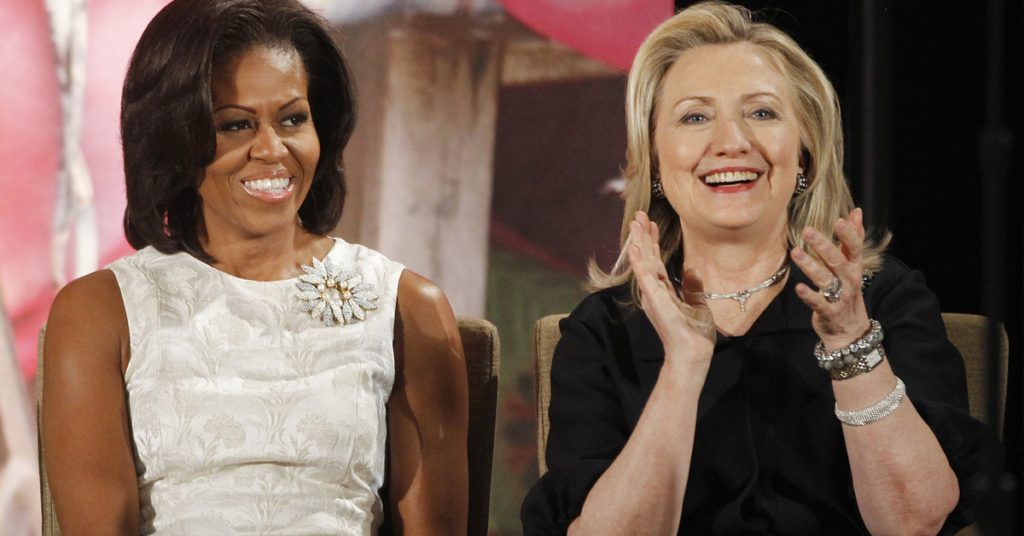
When Hillary Clinton secured her place in the history as the first woman to win a major-party nomination for president, Democratic politicians around Washington marked the historic moment with barrage of statements, formal endorsements and public cheers. One political figure, however, was notably silent: Michelle Obama. The first lady let her husband speak for her during that moment in June, choosing instead to wait weeks to lend her voice to Clinton’s cause at the Democratic National Convention in what would become one of the most memorable moments in the campaign. It was the sort of careful choice that illustrated the gulf of differences between the current and former first ladies, women who have chartered very different paths through public life and are now locked in marriage of mutual interest. When they campaign together for the first time Thursday, the event in Winston-Salem, North Carolina, will bring together one of the least traditional first ladies in modern history with one who has fully embraced tradition. Clinton dove into policy, undertook a massive project and failed under a harsh spotlight. Mrs. Obama largely steered clear and enjoyed quieter, modest success. Both Ivy League-trained lawyers with their own careers, Clinton bridled under the stereotypes associated with the office, Mrs. Obama declared herself “mom-in-chief” (and let it be known she prefers the Mrs. title before her last name). And when her time in the White House was ending, Clinton began plotting her return to Washington. Mrs. Obama hasn’t hid her readiness to leave. Asked if Mrs. Obama would ever consider running for president herself, White House officials who rarely speak for the first lady don’t hesitate. “No,” White House spokesman Josh Earnest said flatly. That’s crushing news to the Democrats who have relished Mrs. Obama’s speeches in support of Clinton as high-points of the campaign cycle. Mrs. Obama’s passionate response to Trump’s vulgar comments about women has brought an emotional resonance to Clinton’s bid that the candidate, who rarely gets personal on the stump, doesn’t often deliver. Mrs. Obama’s appearances have become a key part of Clinton’s effort to fire up women, particularly black women for whom she’s a model and a source of pride. (Clinton even quotes Mrs. Obama’s DNC speech on the stump: “When they go low, we go high.”) Mrs. Obama, meanwhile, has her own reasons for stumping for Clinton and campaigning against Republican Donald Trump. “I think Mrs. Obama really wants to make sure her husband’s legacy is maintained and Mrs. Clinton is the way to get there,” said Myra Gutin, a professor at Rider University who has written about first ladies and women in politics. The partnership has on one level made for a striking political odd couple. As first lady, Mrs. Obama has largely dodged controversial issues. She’s stayed focused on her projects involving healthy eating, exercise, support for military families and education for girls – and not publicly expressed opinions on thornier subjects. She’s mastered the art of advocacy through popular culture, while, in recent years, all-but ignoring the possibility of policymaking through legislation. She’s cultivated a brand built on style, glamour and fashion. It’s a tenure that bears little resemblance to her Democratic predecessor in the East Wing. Clinton came in promising, along with her husband, a new kind of partnership in charge at the White House. Hillary Clinton was a veteran of the feminist movement and ready to expand the office of first lady to suit her experience and passion for policy. She had an office in the West Wing, took over the health care overhaul effort and ultimately became a target of investigations and criticism alongside her husband. It was a history Mrs. Obama and her aides sought to avoid. Asked to cite role models, Obama has named Eleanor Roosevelt and Jacqueline Kennedy. The Clintons and Obamas, of course, have a fraught history, one that includes both spouses. While Barack Obama and Hillary Clinton battled in 2008, Michelle Obama raised questions about her husband’s opponent, framing the choice between the two as “about character.” Since then the women have publicly buried the hatchet. They’ve appeared at countless events together and heaped praised on each other’s work, although there’s little sign they’ve spent time one-on-one. Comparing how first ladies use the office is especially tricky, historians note. Because the office comes with no set of constitutional duties, it is also a reflection of an individual’s style, personality, politics and times. The differences between Clinton and Mrs. Obama’s tenures speak in some ways to the differences in their generations – Clinton representing the first wave of baby boomers eager to push boundaries, while Obama benefited from lessons learned, noted Carl Sferrazza Anthony, a historian at the National First Ladies Library. “Beneath the surface they both brought a sense of rigor and structure and focus,” he said. “They were very objective oriented.” Those objectives were clearly different, he said. “I think Michelle Obama may end up being perhaps one of the most influential first ladies when it comes to influence on the America public, whereas Hillary has been one of the most important in terms of achievement in terms of policy.” Republished with permission of the Associated Press.
Alabama to be hit hard by Obamacare increases for 2017, report shows
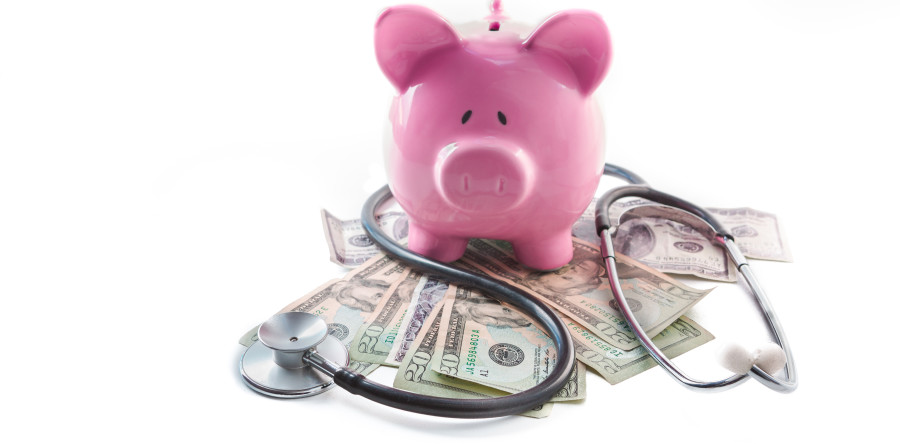
Alabamans will find the Affordable Care Act a lot less affordable in 2017. The Obama administration announced official numbers this week on how much more the ACA — commonly known as “Obamacare” — will cost Americans in the coming year. Most people nationwide were shocked, and Alabama will feel the pinch more than nearly any other state. Deductibles for individuals covered by the lowest-priced Obamacare bronze health plans are set to average $6,000 in 2017 — the first time in the three years of ACA marketplaces that they cracked that threshold. As for the second-highest silver plans – the most popular choices – Birmingham will have one of the largest increases in unsubsidized premiums, up 71 percent from $288 to $492 for a 40-year-old non-smoker), according to a recent study by the Henry J. Kaiser Family Foundation. Due to their popularity, silver plans are used to determine subsidies an individual or family would receive through the ACA. Most people who get coverage through the marketplaces receive a tax credit to lower premiums. CNBC reports that most subsidized customers opt for a silver plan, because the subsidies reduce their monthly costs, and because silver plans are the only ones where out-of-pocket financial subsidies are applied. In 2016, a 40-year-old adult making $30,000 per year would pay about $208 per month for a silver plan. In some parts of the country, a person switching to a new second-lowest-cost silver plan is in 2017 will pay a similar amount; the after-tax credit payment in 2017 is estimated at $207 per month or a change of 0 percent. Average monthly payments for bronze plans nationwide are scheduled to increase a minimum of 21 percent next year for those Americans who earn too much to qualify for subsidies. A 40-year-old bronze plan customer without subsidies can expect to pay $350.23 each month for their health coverage; this year, it was about $289.88 per month. Deductibles for silver plans will also average about $3,572 for individuals next year. That’s about 15 percent more than the current average deductible for silver plans. In addition to higher premiums, Alabama will also have fewer choices in insurance providers. Kaiser found that losses in the market caused by higher premiums and deductibles are leaving some insurers — like UnitedHealth and Aetna — to pull out of either the ACA marketplace or individual markets altogether. States like Alabama and Florida, which use the federally run Healthcare.org, will have an average number of insurers participating in the ACA marketplace drop to 3.9 in 2017 (down from 5.4 companies per state in 2016, 5.9 in 2015 and 4.5 in 2014). In 2017, Alabama — as well as Alaska, Oklahoma, South Carolina, and Wyoming — will have only a single insurer offering plans in the marketplace. Kaiser’s full report on the “Obamacare” changes can be found here.
Mobile mayor Sandy Stimpson launches initiative to curb teen violence
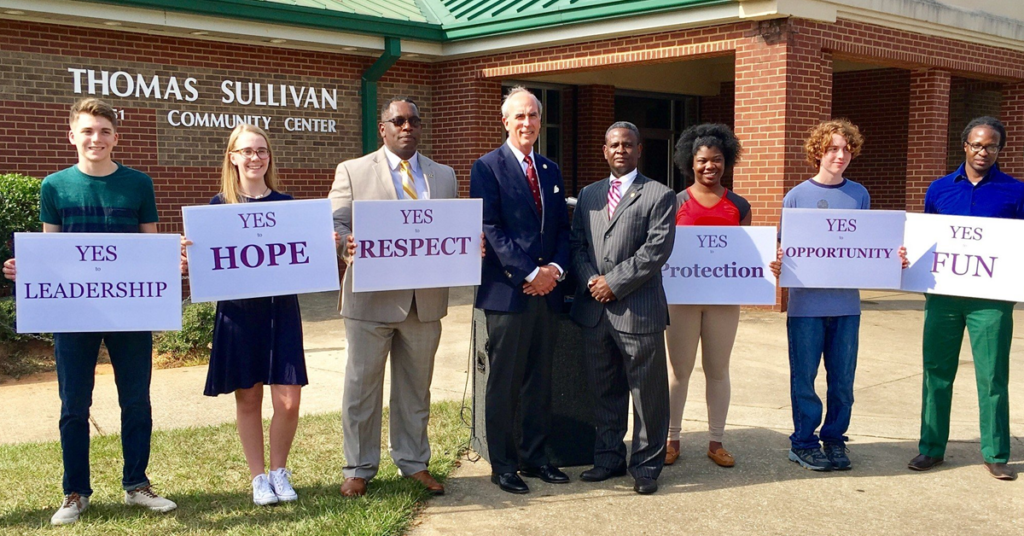
Following the deaths of 12 teenagers in Mobile due to gun violence so far in 2016, the mayor of Mobile is launching a new initiative to help put an end to teen violence. Mayor Sandy Stimpson said in a press conference Wednesday he is launching the Youth Empowered for Success (YES) Initiative that will endeavor to address the city’s greatest challenge — reversing the effects of violence and securing a bright future for all youth in the Port City. “This year alone we have buried 12 teenagers in the city of Mobile — one is too many,” said Stimpson during the press conference. “As your mayor, my heart breaks for the families of those 12 teenagers and I hope your heart breaks also.” Stimpson said Mobile will be the first mid-sized city to curtail this problem and make a promise and commitment to its children that they will all be empowered for success. “This is a grassroots effort to make sure that we give back to the community what they deserve, the opportunity for their children to be successful and have the opportunity to live in their communities and be safe in their communities,” Mayor Stimpson continued. Stimpson has structured the interagency program around seven functional areas assigned to various team leaders. Leading the initiative and the “Love” division is Mobile’s Assistant Chief of Police Lawrence Battiste. The team will consist of the following: Hope: Faith-Based and Neighborhood Groups: to be determined Respect: Crime Prevention and Intervention: Curtis Graves Protection: Enforcement and Advocacy: Lt. Edward Elia Opportunity: Job Readiness: Anitra Henderson Fun: Enrichment, Recreation & Athletics: Terrance Smith – iTeam Resources: Grants: Laura Angle “Other organizations have operated in silos,” Stimpson explained. “We want to tear down the walls of the silos. If we are successful, we will lower, if not eliminate youth violence in the city of Mobile, while also empowering our youth to succeed in life.” Watch the press conference below:
Former GOP Congressman Joe Walsh says he’s grabbing his musket if Donald Trump loses
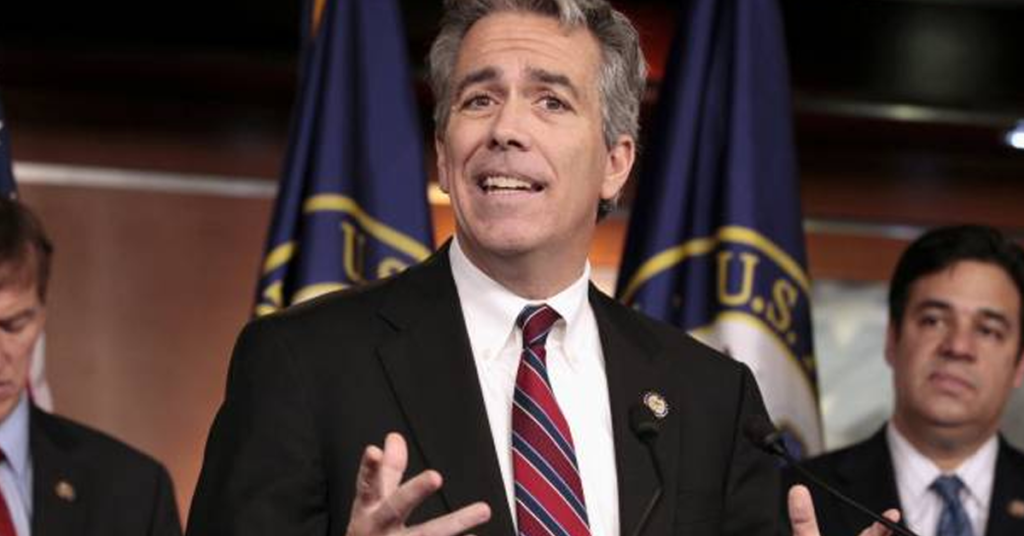
A former Republican congressman from Illinois says he plans to grab his musket if GOP nominee Donald Trump loses the presidential election. Former U.S. Rep. Joe Walsh tweeted Wednesday afternoon : “On November 8th, I’m voting for Trump. On November 9th, if Trump loses, I’m grabbing my musket. You in?” On November 8th, I’m voting for Trump. On November 9th, if Trump loses, I’m grabbing my musket. You in? — Joe Walsh (@WalshFreedom) October 26, 2016 Walsh later said on Twitter that he was referring to “acts of civil disobedience.” Walsh told WMAQ-TV that the reference to a musket was a metaphor. He says if Trump loses, “we’re going to protest and boycott and practice civil disobedience. We may start a third party.” The politician-turned-radio host has made inflammatory comments on Twitter in the past. He told President Barack Obama to “watch out” on Twitter in July after five police officers were killed in Dallas. Republished with permission of the Associated Press.
AP-GfK Poll: Hillary Clinton has commanding advantages over Donald Trump

Americans see Hillary Clinton as the clear winner over Donald Trump in this year’s presidential debates, according to a new Associated Press-GfK poll. The survey shows commanding advantages for Clinton heading into the final days of the campaign. Here are some things to know about American’s opinions about the presidential election from the new poll: — CLINTON THE BIG DEBATE WINNER Likely voters overwhelmingly think Clinton did better than Trump in the three presidential debates, by a 69 percent to 29 percent margin. And 34 percent say the debates made them more likely to vote for Clinton, while just 18 percent say they’re more likely to support Trump. Clinton’s performance may have even helped her with Republicans, 37 percent of whom say she won and 9 percent of whom say they were more likely to vote for Clinton because of them. Just 1 percent of Democrats say the debates made them more likely to support Trump. The Democratic nominee holds a 14 point advantage overall among likely voters in the poll, 51-37, in part because of Republicans unwilling to say they’ll support the nominee – including some willing to cross the aisle and support Clinton. Nine percent of Republicans in the poll, including 15 percent of moderate to liberal Republicans, say they’re at least leaning toward supporting Clinton. Four percent of Democrats say they’re supporting Trump. Overall, 90 percent of Democrats say they’re supporting their nominee, while 79 percent of Republicans are supporting theirs. Voters are increasingly certain that Clinton will ultimately win, the AP-GfK poll shows. Seventy-four percent of likely voters say they think she will be the winner, up from 63 percent in September. — UPTICK IN RATINGS OF CLINTON Although voters are still more likely to have an unfavorable than a favorable view of Clinton, her ratings have improved slightly in the past month. Forty-six percent of likely voters now say they have a favorable view of the former secretary of state, and 51 percent an unfavorable one. In September, 42 percent rated her favorably and 54 percent unfavorably. Meanwhile, just 34 percent have a favorable view of Trump, while 64 percent hold an unfavorable view of the billionaire businessman. Clinton supporters are more likely than Trump supporters to say major factors behind their support include that their candidate has the best positions on the issues (75 percent to 65 percent), is the strongest leader (74 percent to 57 percent) and is most qualified to be president (86 percent to 39 percent). Opposition to the other candidate is a major factor for supporters of both, but more so for Trump’s backers than Clinton’s, 86 percent to 79 percent. Trump’s supporters are more likely than Clinton’s to say a major reason for voting for their candidate is that it sends a message to the political establishment, 62 percent to 36 percent. — HIGH ON OBAMA There are signs that many Americans aren’t actually looking for dramatic changes. Fifty-five percent now approve of the job Barack Obama is doing as president, up from 51 percent in September. On the other hand, 52 percent of likely voters say they would most likely vote for someone else even if Obama could run for a third term. — NARROWER GAP ON CONGRESS The poll shows voters are slightly more likely to prefer Democratic than Republican control of Congress, by a 5 point margin. Nine in 10 Democratic and Republican voters alike prefer their own party to have control. Still, the poll points to difficulties for the Republican Party moving forward. Just 36 percent of likely voters have a favorable opinion of the party, while 61 percent have an unfavorable one. By contrast, Americans are divided evenly, 49-49, in their favorable versus unfavorable assessments of the Democratic Party. — ALTERNATE MATCHUPS If Mike Pence were the GOP nominee instead of Trump, the poll shows a dramatically tighter race against Clinton, or in a matchup against her running mate, Tim Kaine, if he were the Democratic nominee. Clinton leads Trump by far among likely voters in a head-to head matchup, if third party candidates aren’t an option. But in a hypothetical matchup with Pence, Clinton’s margin becomes only 4 percentage points. If the vice presidential nominees were atop the ticket, the poll shows a nearly tied race. But Kaine leads Trump in a hypothetical matchup by a 16 point margin. One reason for the difference is that Republicans appear more willing to support Pence than Trump. The 79 percent of Republican likely voters who say they’re supporting Trump this year rises slightly to 85 percent if forced to choose only between Trump and Clinton. But 91 percent say they would support Pence in a head to head matchup against Clinton, and 93 percent against Kaine. In general, Republicans like Pence better than they like Trump. Eighty-one percent of Republican voters have a favorable view of Pence, while just 68 percent say the same of Trump. Overall, voters are more likely to have a favorable than unfavorable opinion of both Pence (45 percent to 36 percent) and Kaine (44 percent to 31 percent). — The AP-GfK Poll of 1,546 adults, including 1,212 likely voters, was conducted online Oct. 20-24, using a sample drawn from GfK’s probability-based KnowledgePanel, which is designed to be representative of the U.S. population. The margin of sampling error for all respondents is plus or minus 2.75 percentage points, and for likely voters is plus or minus 3.1 percentage points. Respondents were first selected randomly using telephone or mail survey methods and later interviewed online. People selected for KnowledgePanel who didn’t have access to the internet were provided access for free. Republished with permission of the Associated Press.


